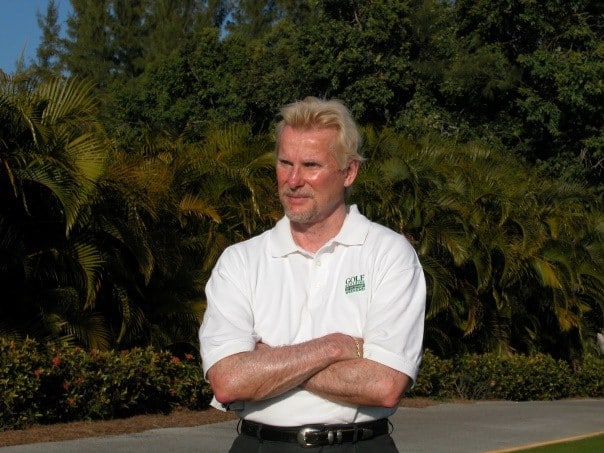The One Thing All the Greats Do
by Dr. TJ Tomasi, College of Golf Senior Faculty and Director of Research
What do all these great players – Watson, Nicklaus, Norman and Seve – have in common? Their swings are different, their backgrounds are different, and their body types aren’t all the same either. The answer is that every great player has performed years of non-stop PRACTICE that, coupled with correct information, combined to build a championship game. And the big news is that you already have the machine to drive this dynamic duo of correct info plus practice.
You’re a Learning Machine
In a mere blink of an eye, as far as evolution is concerned, the human species has climbed to the top of the food chain. How did we take over the planet so quickly? It’s that three pound universe that sits on your shoulders, a powerhouse problem solver with 100 billion neurons, each one with 15,000 or so finger like projections that reach out to one another to form neural networks that operate in nano-seconds.
The process of learning your golf swing (or anything else, for that matter) begins when you challenge your brain by flooding it with new information. The overload creates a period of chaos that prompts your brain to add capacity to handle the new surplus – your brain grows as you learn. So there’s no question that you’re a lean, mean, learning machine – it’s in your genes. The point here is that you have the where-with-all to play good golf, and all you have to do is program in the correct info and then practice. In case you hate to practice but want to be a great golfer here’s why you have no choice – its practice or go home.
What Science Says about Practice
How can a player who has only .36 seconds from the top to impact, produce the correct geometry to play great golf? Once you have the correct info on which to model, you don’t need any more “new info” – what you do need is a network of super high-speed highways connecting your storage bins. To be specific, science says it’s the ability the brain has to transfer the correct electrical impulses very rapidly and extremely efficiently that allows you to respond as you should. Dr. Douglas Fields, Chief, Nervous System Development & Plasticity Section, National Institute of Health, states in a personal communication that myelin, a substance produced by the brain, insulates the neural pathways, preventing the electrical current necessary for fast reactions from leaking off course.
‘In the past, all thinking about learning focused on changing the inputs to the neurons (synapses). What was overlooked was the importance of information transmission between neurons separated by long distances. In any complex cognitive task, and crucial in any sport, information must be passed in a hierarchical way through several parts of the cerebral cortex, each of which carries out a specialized component of the task. If information is not passed from one information processing center to another efficiently, the overall performance will be degraded.’ And here, Dr. Fields describes the role of myelin. ‘The transmission speed of impulses through axons connecting distant neurons is controlled in large part by myelin. My research and the research of others show that the process of forming myelin can be regulated by the transmission of impulses through axons.’
And how do you stimulate the production of this insulating material so essential for athletic prowess? The answer is a simple prescription: Practice. Every time you use a pathway, it wraps itself a little more tightly with myelin, and your Time IQ as an athlete goes up – physically you get smarter.
Myelin, Keeper of the Kinematic Sequence
The kinematic sequence [KS] is the mechanism for the transfer of energy through your body, down the clubshaft, and into the ball. As has been taught at Keiser University, this key process takes place under the auspices of the conservation of momentum, where one sector of muscles fills with energy, reaches a peak speed, then slows, thereby passing it’s energy to the next sector, which attains its peak speed, then slows – and so on until the energy is finally delivered down the shaft and into the ball.
This entire process is a matter of exact timing – lose control of the “when” and you lose control of the ball. Your Time IQ is dependent on the flow of electricity, which in turn depends on how tightly your neurons are wrapped with myelin – which is laid down by the constant repetition of skills through practice.
The Takeaway: This is the story of what “Science Says” about why you will never be at your best without constant practice. Or instead of asking science, you could listen to Ben Hogan: ‘Every day that I missed practicing takes me one day longer to be good.’ He was to humble to say ‘Great.’






 My instructors believed in me. They were more than instructors, they tried to get to know you as a person and tried to understand your goals so they could push you towards them. Student services helped me find a job before I even graduated. Everyone was dedicated to my overall success.
My instructors believed in me. They were more than instructors, they tried to get to know you as a person and tried to understand your goals so they could push you towards them. Student services helped me find a job before I even graduated. Everyone was dedicated to my overall success.
